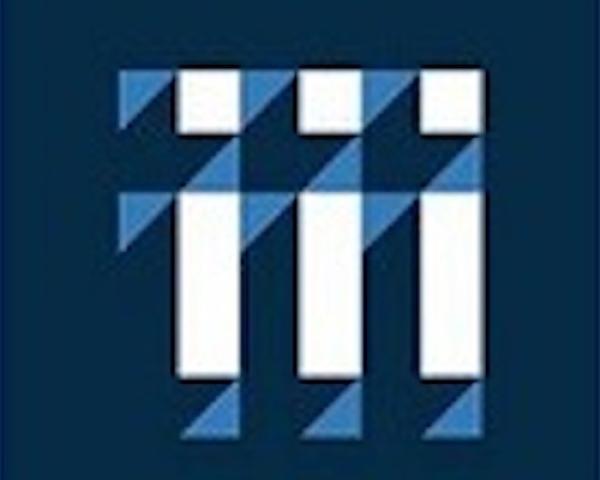In their most recently quarterly discussion, Paul Carroll, editor-in-chief of Insurance Thought Leadership, caught up with Dr. Michel Léonard, the chief economist and data scientist at Triple-I, to review how the economy is affecting insurers’ results and prospects for growth.
What follows is a transcript of that conversation, edited for length and clarity.
Paul Carroll:
What is your perspective on the current state of the insurance industry and the broader economy?
Dr. Michel Léonard:
The insurance industry is navigating a complex economic landscape. Inflation remains a significant concern, with the Consumer Price Index (CPI) at elevated levels. This affects insurers in various ways, from increasing claims costs to improving investment returns.
Despite these challenges, the industry has demonstrated resilience. Insurers are adapting to the changing environment by closely monitoring their underwriting practices and adjusting pricing as needed. They are also leveraging technology and data analytics to enhance operational efficiency and better understand and manage risks.
Looking at the broader economy, there are signs of a slowdown. GDP growth has moderated, and consumer confidence has been affected by the inflationary pressures. However, the labor market has shown strength, with low unemployment rates.
The insurance industry is closely watching these economic indicators. While the industry is well-capitalized and prepared to weather economic fluctuations, sustained inflationary pressures and a potential recession could pose challenges. Insurers will need to remain vigilant, adaptable and focused on maintaining financial stability while serving the needs of policyholders.
Carroll:
What is the current narrative around the economy and financial markets, given the recent shifts in expectations around interest rates and inflation?
Léonard:
The narrative has shifted. For the past six months, there was clarity on the direction of bond yields and equity markets, with the old normal prevailing: Bond yields were decreasing, and equity markets were improving.
This was largely driven by expectations of Federal Reserve rate cuts. However, a couple of months ago, I began to question whether this narrative was still primarily about rate cuts and what was actually driving those rate cuts.
Previously, the focus was squarely on inflation measures like CPI, but now I believe the story is evolving. A few years ago, the consensus was that inflation would not return to normal, and the Fed's long-term 2% target seemed to fade from discussion. We then saw inflation drop significantly by several percentage points in just a few months, which many thought impossible.
The most recent numbers for March came in at 3.5% inflation, up from 3.1%. While that’s still in the 3% range, plus or minus, the question is whether this is where we will remain for the time being. Personally, I'm not sure that's necessarily a bad thing, but the narrative is clearly shifting.
Carroll:
Some recent articles suggest that high interest rates may be driving the economy rather than being a drag on it. What factors lead you to conclude that interest rates will settle around 3.4% to 3.6% for an extended period?
Léonard:
I still believe there will be a cliff this year, and if the Fed doesn't lower rates it would send tremors through the markets. Looking at the Fed's own forecasts over the past two years, they keep pushing back the 2% inflation target to the long term, indicating that we're unlikely to reach that goal.
If we don't hit that trigger, the Fed can't lower rates, and we'll be stuck at that 3% or so rate. The Fed is unlikely to be comfortable with anemic growth for a year or two, especially with uncertainty about when inflation will return to 2%.
Carroll:
What implications does this have for individual investors and the insurance industry?
Léonard:
For individual investors, high-quality four-year bonds are now offering returns of around 4% per year, which compounds to nearly 20% over four years without the uncertainty of equity markets and political or geopolitical risks. This is particularly attractive for retirees and those later in their careers who have bonds.
However, while these individuals may spend more, they are unlikely to spend on big-ticket items like homes and cars, as they likely already have these and will use them for longer. For the insurance industry, this means a slight correction in equity markets, probably for a quarter, until there is more clarity about Fed interest rate cuts.
If rate cuts don't materialize, the correction in equity markets could deepen in the second half of the year, especially with political risks. Depending on their outlook, individual investors may choose to cash out of equity markets and move into fixed income for 12 months or ride out the volatility for three months.
Carroll:
What are some highlights from your recent quarterly insurance forecast?
Léonard:
Our forecast looks at both overall GDP and what we call underlying growth, which refers to things like home rebuilding costs and auto usage rather than market prices. We've been predicting that following the pandemic-related recession, underlying growth for P&C insurance would outpace the rest of the economy.
This trend started to emerge in Q4 of last year. Over the next three years, we project underlying growth to increase from 3.4% to 4.0% and reach 4.8% by 2026. While the 4.0% and 4.8% figures might be slightly optimistic, the upward trajectory is clear.
This growth is driven by anticipated consumer spending on big-ticket items like homes, not just disposable goods. On the GDP front, our outlook is more optimistic than the Fed's, with projections of 2.6% this year, 2.9% next year and 3.1% in 2026. The Fed's projections on GDP show a declining trend of 2.2%, 2.1% and 2.0%.
Even if the Fed's long-term forecast of 2.0% interest rates and 2.0% real growth materializes, it's still not where we want to be.
From an insurance industry standpoint, the current economic situation is promising, but it largely depends on the Federal Reserve's actions. If the Fed's scenario plays out, we could be in a challenging position, as they control interest rates.
The key question is no longer about when the Fed will cut rates, but rather why they will do so and whether they will allow a 3% interest rate and inflation environment with rates above current levels. The Fed's decisions will have significant implications for the insurance industry and the broader economy.
Carroll:
What impact do you think persistently high interest rates could have on home purchases, particularly for the younger generation entering the housing market?
Léonard:
While high interest rates can certainly be an impediment to home purchases, especially for the younger generation, it's important to consider the broader policy decisions at play. As an economist, I believe that a moderate increase in inflation from 2% to 3% is reasonable, although this view may differ from the Federal Reserve's stance.
When it comes to generational wealth transfer and housing affordability, interest rates are just one piece of the puzzle. The availability of housing also plays a crucial role. Housing economists point to policies such as rent control, construction regulations and the promotion of multi-use buildings in big cities as key factors in addressing the supply side of the equation.
While I'm not a housing economist myself, I agree with the experts who emphasize the importance of these supply-side policies. Focusing solely on the demand side through interest rates may not be sufficient to tackle the affordability issues faced by younger generations seeking to enter the housing market.
Carroll:
What are your thoughts on the current state and future outlook of commercial real estate, particularly in terms of its impact on the insurance industry?
Léonard:
The insurance industry's investment in commercial real estate has decreased over time, from owning 60% to 70% to now around 30%. However, it remains an important asset class for insurers.
In terms of commercial property insurance, we estimate 3.5% growth this year, which is above the average of 3.4% for all underlying growth. This growth is only surpassed by personal auto insurance.
Recent conversations with trade economists have revealed early signs of recovery in the commercial real estate market. The ability of Class A buildings to become high-end apartment buildings and adopt a multi-use format is a positive indicator. This transition is crucial for the revival of urban areas, as it allows for the emergence of small businesses and mom-and-pop stores on the first floors of these buildings.
The recovery is particularly evident in the Sunbelt region, which continues to boom, especially in Class A properties. This trend aligns with the general principle that during a correction, lower-quality assets are the first to decline, while higher-quality assets are the first to recover. These signs of hope in the commercial real estate market are expected to support the growth of commercial property insurance, as well.
Carroll:
What is your perception of how the public discussion and understanding of economics has evolved over the past few decades? It seems there is now a more sophisticated and shared understanding compared with the past, when information was more siloed within individual companies.
Léonard:
You're absolutely right. There is a much more sophisticated audience today, whether it's consumers, corporations or financial firms. The accessibility of economic data has greatly improved, with people closely following key indicators like unemployment, inflation and GDP growth.
The Federal Reserve has also played a role in enhancing public understanding by communicating more openly and providing explanations. However, translating economic insights for specific individuals and companies remains a challenge for economists.
While there are shared resources and a degree of consensus among industry economists, relying on a small group of 10-12 economists for a consensus view may not be representative of a true national consensus.
Economists need to find a middle ground in providing specific, actionable insights while effectively communicating the inherent uncertainties and limitations of economic forecasting. In our own work, we focus on conveying the overall direction of economic trends, as this is more relatable and easier to implement than fixating on specific numerical targets.
Carroll:
What insights can we gain by looking beyond the surface-level numbers and considering the underlying factors driving the current situation in the insurance industry?
Léonard:
While there have been some short-term changes and volatility in the equity markets over the past few weeks, the bigger picture remains largely unchanged. The key difference is that we now face more uncertainty about where the industry is heading in the long term.
Previously, we had a clearer sense of our long-term trajectory, even if there was some uncertainty in the short term. Now, the situation has reversed: We're in a relatively stable position on a day-to-day basis, but the future direction is less certain.
Ultimately, it's crucial to look beyond the immediate numbers and consider the broader context and trends shaping the insurance industry's path forward.
Carroll:
What is your outlook on the underlying growth for the property and casualty insurance industry?
Léonard:
The property and casualty insurance industry is currently in a good place in terms of underlying growth. However, it's important to remember that the industry experienced a few challenging years, performing worse than the overall economy.
It will take some time for the industry to fully recover from those setbacks. Many companies still have combined ratios above 100, which makes it difficult to achieve profitability. Despite the positive growth trends, the industry continues to face significant challenges in maintaining profitable operations.
To listen to the audio of the full conversation between Paul Carroll and Michel Léonard, please go to Episode 9 of Triple I’s All Eyes on Economics podcast.











